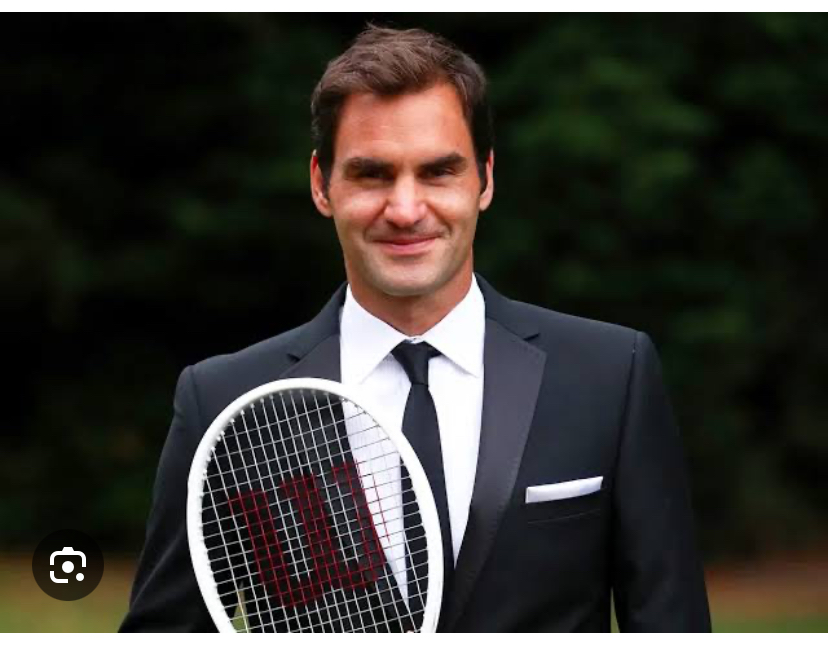CELEBRITY
The ‘genius’ behind ‘one of best images’ in tennis See more👇👇

In 2007 two tennis players could both claim to be the best – but on different surfaces. How could the Roger Federer-Rafael Nadal debate be settled?
One man had an eye-catching answer, and it was so memorable that Federer mentioned it in his heartfelt message, external to a retiring Nadal a few weeks ago.
Reminiscing about the many memories they shared over two decades, Federer pointed to “that match on half-grass, half-clay”.
At the time, Spain’s Nadal had been undefeated on a clay court for two years and Swiss Federer had not lost on grass for almost five years.
This was long before Nadal had racked up 22 Grand Slam titles and Federer 20 – and well before Novak Djokovic had overtaken both with his 24, or even won his first. But Nadal and Federer were nevertheless well into a rivalry that would become one of the greatest in sport.
They were dominant on their respective surfaces – so they needed a special court that could offer both conditions.
Enter Pablo del Campo, an Argentine creative and tennis fan. Inspired by the mixed surfaces of a baseball stadium in Miami that he flew over as a child, Del Campo came up with the idea of a half-grass, half-clay court.
“When the outfield meets the infield, the grass meets the dirt… seeing that from above, I saw a hybrid tennis court,” said Del Campo, who had previously tried unsuccessfully to arrange a mixed-surface match between Pete Sampras and Gustavo Kuerten, the leading grass and clay players before the Federer-Nadal era.
Del Campo first approached Nadal and Federer’s teams in 2005 with the idea and both eventually agreed to an exhibition match on the mixed surfaces, with the Swiss saying it would be “fun” and “exciting”.
“I think that the idea was irresistible for both Federer and Nadal,” Del Campo told the BBC’s Sporting Witness podcast.
Construction of the court took 19 days, costing $1.63m (£1.28m), and organisers had to tackle a worm infestation, but finally the court – described as “one of the best images that I’ve ever seen in tennis” by Djokovic – was ready.
Golf to the rescue
All 7,000 tickets for the 2 May event sold out within two hours as excited fans rushed to book their spot at the Palma Arena on Nadal’s home island of Mallorca.
But three days before the pair were due to play, the match was almost cancelled.
The grass had not coped well with growing indoors. It was dead in parts and when a ball landed it would leave a hole.
And then organisers also discovered a worm infestation.
“We understood that was a mess, a big mess,” Del Campo said. “It was very, very stressful.”
The solution to was to replace the court’s grass with that of a local golf green.
The match was now back on.
‘Great experience’ but Nadal feared ‘disaster’
The match was played over three sets, with changeovers extended from 90 seconds to two minutes to allow the players to change their shoes for each surface.
Players often plan their transition between tournaments on different surfaces carefully over several weeks, with different demands on the body in terms of footwork and movement. For example, players slide on clay and extend their strides to reach shots, while on grass – which can be slippery – their steps are shorter.
In this match, they were having to adapt to hitting off the other surface every two games.
Nadal broke Federer’s serve on both grass and clay to take the first set before Federer broke on clay to level the match.
The Spaniard went on to win 7-5 4-6 7-6 (12-10).
“It was a great experience although before the match I thought it would be a disaster because it would be so hard to adapt,” Nadal said at the time.
Federer said he had enjoyed the experience “although it was a bit stressful having to change shoes all the time”.
The exhibition was deemed a success and a deal was struck for another match to be played on Del Campo’s court.
However, this never came to be, leaving Nadal with the bragging rights in the battle of the surfaces – and Del Campo with all the credit for creating it.
“I thought that was fantastic. Whoever came up with the idea was a genius,” Djokovic said many years later. “As a tennis fan I enjoyed that very much.”









